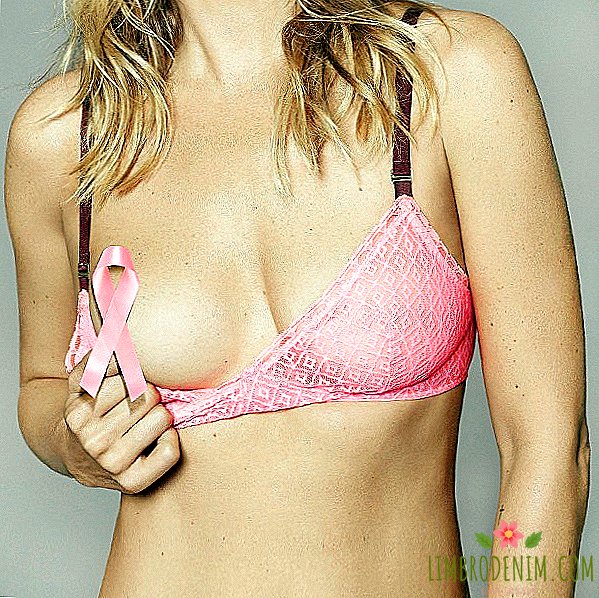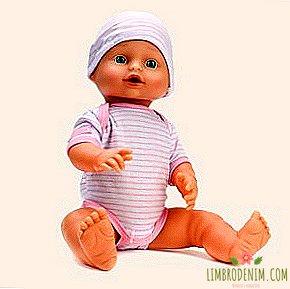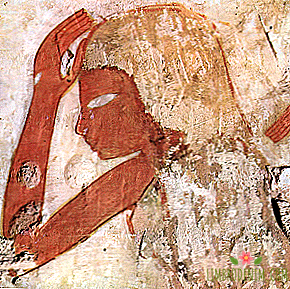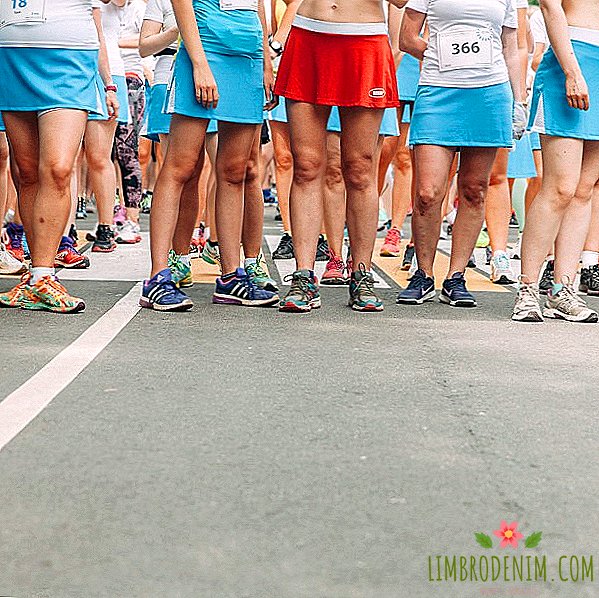Why did the West talk about the fashion revolution in Russia

Olesya Iva
Fashion and agenda are closely intertwined. At a minimum, because stamps do not exist outside the context and are a visual message that the audience reads more often than newspapers. As a maximum, fashion is a business that directly depends on the political and economic situation in the world. Ten months ago, against the background of the January events on Maidan, Dazed & Confused journalists went to Kiev to write about the fashionable Ukrainian revolution and to prepare a text about a new generation of young local designers who had announced themselves.
However, the long-awaited material under the heading "Kiev's fashion revolution" as a result for the magazine was prepared by Daria Shapovalova, and not the special editions of the publication. Yesterday, a text with a similar heading - "Russia's new fashion revolution" - was published on Dazed. In it, the London journalist Emma Hope Allwood writes about the appearance of a new wave of Russian brands and the fashion revolution in Russia. Are there any similarities and differences between the situation in the fashion of Russia and Ukraine?

They started talking about the powerful evolution of the Ukrainian fashion after Darya Shapovalova took it seriously, becoming the ideologist of the Mercedes-Benz Kiev Fashion Days in 2010, and also, not least, a contributor to Western portals about fashion Nowfashion.com and Style.com. Shapovalova and her partner Kazbek Bektursunov saw in time in Ukrainian designers a serious business potential. Dozens of interviews, shows, Darya’s appearances on street-style blogs and acquaintances at the world fashion weeks led to her being perceived as the envoy of Ukrainian fashion, the backbone of which was then unknown to the world young local brands.
In addition to Kiev Fashion Week, an international platform to support young talents, Fashion Scout, was provided to help designers (though not for free), namely, a show at London Fashion Week and participation in the Paris Fashion Scout showroom. Little by little, Fashion Scout brought the first publications about Ukrainians in the international press and acquaintances with international buyers. In early 2014, due to heightened attention to Maidan, all the world's major media outlets started talking about Ukrainian designers seriously: Sarah Mauer from the pages of Vogue.com, Vanessa Friedman in the Financial Times, and Daria herself from the pages of Dazeddigital.com and Style.com. Even sympathy for Ukrainian woman Julia Efimchuk from Chloe Sevigny and Opening Ceremony creators Carol Lim and Umberto Leon at the fashion festival in Yerah look like a logical consequence of these events. In the new season, Dasha is already showing Ukrainians in her own showroom in Paris without Fashion Scout and is actively continuing her business expansion, taking on Kazakhstan.
In one of the interviews, musician Mickey Blanco expressed the right idea: “Fashion can be very influential in a political sense. Fashion can put one question or another squarely, ignite the idea by the power of one image only. The image encourages a new way of thinking. We have to follow the games of culture and talk when you need to speak. Ask questions when they appear. " One cannot but agree with him. Until a certain time, Russian young brands did not attract special attention, and it focused on politics: the Pussy Riot case, laws against the LGBT community. Then there was the Crimea. As a result, Russia and the new decisions of Vladimir Putin today are almost the main item on the news agenda. In a natural way, politics ignited interest in culture and life in Russia, and Russian fashion — more precisely, its youngest and most progressive representatives — became one of the subjects of close attention of the West. At first, The Guardian wrote about this, then the Fashionista and Paper, now Dazed pulled up.

The isolation peculiar to the Russian fashion is gradually reborn into a community

Olwood begins his article "Russia's new fashion revolution" with the words "Putin, Pussy Riot, Homophobia." In these three words, alas, focuses today's image of Russia in the West. The author does not write about the vital details: new laws that can strangle a small business in the bud, or the dollar and euro, which seem to mutate rather than grow. However, it is precisely with this that young people have to fight, on which the journalist places his hopes on the revival of the country. Emma starts from the tip of the iceberg in the face of Dazed & Confused pet Gosha Rubchinsky - the most recognizable designer in the West, who not only feels subtly self-confident and Russia as a whole, but also clearly translates it through skate culture, understandable in any language of the world.
She also writes about the Omsk designer Anton Galetsky, who in the new season had the best ironic of the 90s, Gopniks, plagiarism and the mass market. Do not forget about the pride of the Moscow fashion industry - Andrey Artyomov and his brand Walk Of Shame, as well as Olya Shurygin, who this year presented her Cap Amerika brand in London at the Young Creative Entrepreneur competition, and about the participants of Mercedes-Benz Fashion Week Russia : designer with Georgian roots Riya Keburiya and Yasya Minochkina - with Ukrainian ones, both are assisted by people from Moscow. The Dazed list is clearly incomplete. One could safely add at least some more young brands: Dasha Selyanova and her ZDDZ brand (although Dasha is a London designer, we, of course, consider her as ours), LES 'designer Lesia Paramonova, Natalia Alaverdyan and her AWAKE brand, osome2some, Zhenya Kim, Turbo Yulia, Luda Nikishin, Artem Shumov and the opening of the last fashion week in St. Petersburg - Yuri Pittenin with the Saint-Tokyo brand.
Interestingly, the young Russian brands are almost unrelated. They have no centralized support, like American and British designers, or a strong tradition to cooperate with each other: in fact, they existed autonomously for a long time. For comparison, all Ukrainian designers not only “sit in the same boat”, but also know each other's seamstresses almost by name, help with sketches of less well-known colleagues. Meanwhile, the Russians in fashion have one thing in common. None of these young designers exploits a political or national theme (with the exception of the “yard 90s” by Rubchinsky and Galetsky): they simply act in a global context and offer cool designs that can be appreciated in any country in the Internet era.



Yes, we have not yet had a fashion enthusiast capable of playing the same role as Daria Shapovalov for the Ukrainian industry, although it is high time to get serious about promoting young Russian talents. Such a person could be Miroslava Duma, given her influence in the world, but, apparently, she has other tasks. This year, we learned the name of the president of Mercedes-Benz Fashion Week Russia, Alexander Shumsky, who recently announced the creation of the Russian Fashion Chamber, to the post of which the honorary chairman was elected Vyacheslav Zaitsev. This appointment raises a number of questions, especially after the Forbes interview, in which Shumsky says: “Fashion is not only beautiful, but also a rather complicated business. It’s not enough to make a collection of clothes, then it’s important to launch it into production and sell. And these steps are not in anyone’s country available. Unfortunately, in Russia over the past 15 years, not a single designer has emerged who could embody all these three stages at least at an average European level. " We look forward to the support program that the chamber will prepare.
It is pleasant that, despite the tense or at least cautious attitude towards modern Russian politics in the West, interest in our culture and art is not lost. There is a huge reciprocal desire to talk about them - out of a sense of pride in the younger generation, which has nothing to do with hurray-patriotism. The real feeling of faith in the country and a huge number of talented people in it are fueled by the appearance of the shaky but healthy environment that young people form independently: with their talents, with their head and hands. Therefore, I want to talk about the success of Gosha Rubchinsky and the screenings of Tigran Avetisyan and Dasha Selyanova in New York, and not just about the lack of cheese, the next bills and the smell of hydrogen sulfide in Moscow.
The isolation peculiar to the Russian fashion until recently, is gradually reborn into a community. Kuznetsky Most 20 becomes the Russian VFILES, bringing together young designers. The landing of Russians for the first time leaves for Milan on the trade show Pitti Super. Andrey Artyomov and Maria Stern are practically side-by-side doing their show rooms during Paris Fashion Week. Young stylists, make-up artists, designers, journalists and photographers support each other, make joint projects, remove the lookbooks for free or for a penny. This movement is growing, and, indeed, Emma Hope, this is exactly the new Russia.




